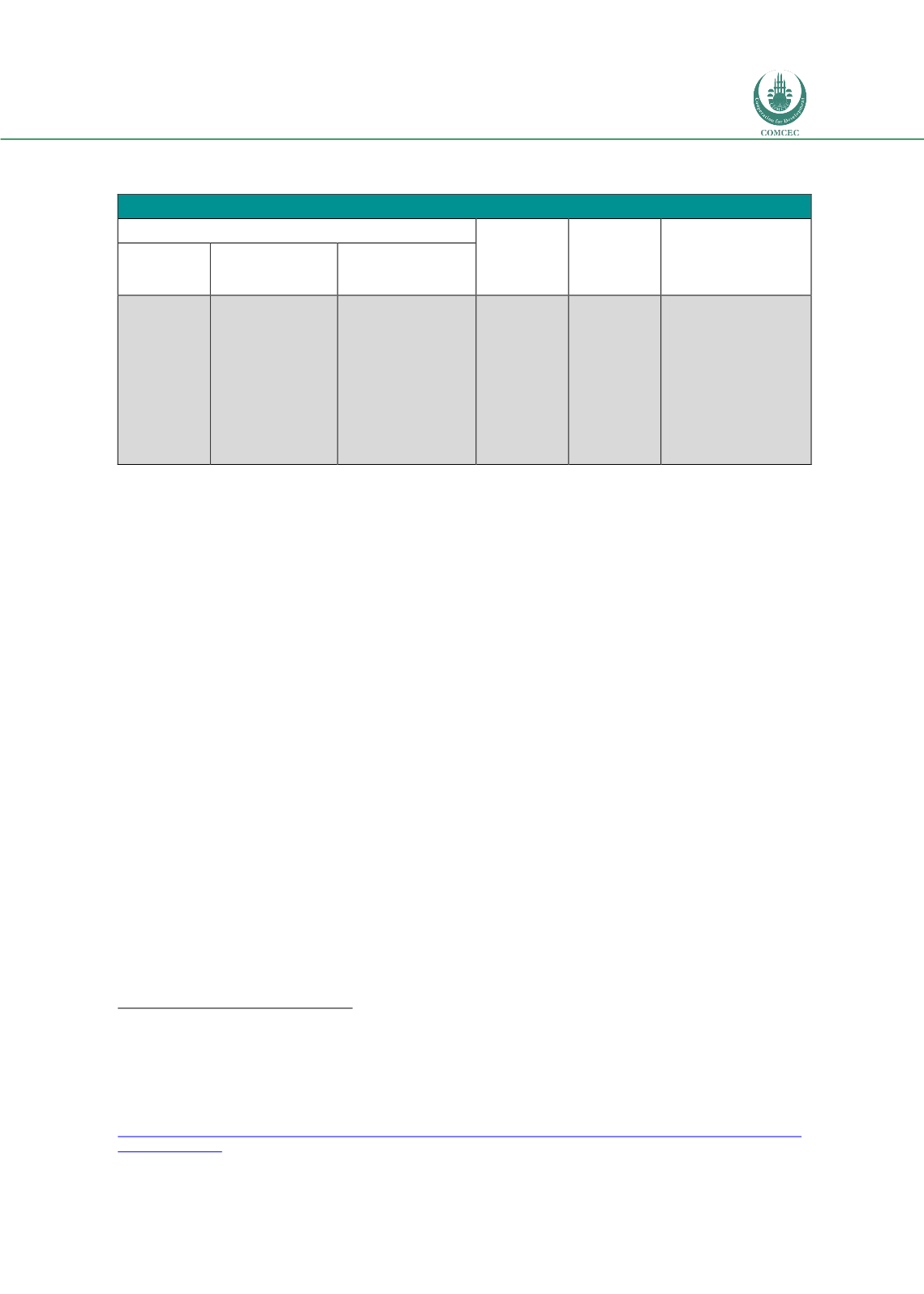

Forced Migration in the OIC Member Countries:
Policy Framework Adopted by Host Countries
103
Table 8: School access rights and fees for refugee children
Access to Education for Refugees by Nationality
Palestinians
Syrians
Iraqis
Other
1948
Refugees
Ex-Gazans
Palestine
Refugees
from
Syria (PRS)
Free access
to
UNRWA
schools
Free access
to Jordanian
schools,
as
nationals
Free
access
to
UNRWA schools
Charged foreigners’
fee (USD 56 for
primary school and
USD
85
for
secondary school)
to access Jordanian
schools
Free
access
to
UNRWA schools
Charged foreigners’
fee (USD 56 for
primary school and
USD 85 for secondary
school) to access
Jordanian schools
Enrollment
fees waived
by
government
Enrollment
fees waived
by
government
Charged foreigners’ fee
(USD 56 for primary
school and USD 85 for
secondary school) to
access
Jordanian
schools.
For
Somalis
and
Sudanese,
fees
subsidized by UNHCR
and NGOs
Documentation can be another challenge. To register for school, children are required to have
a valid UNHCR asylum seeker card and Syrians must have registered with the Ministry of the
Interior. In addition, children are generally required to supply documents from their previous
school to attest to their education level, although the Ministry of Education has eased this
requirement as refugee children were frequently unable to supply this documentation.
224
Other policy and practical barriers may prevent students from enrolling in or attending school
among both Syrian and Iraqi families.
225
Perhaps most critically, children who have been out
of school for more than three years are not allowed to enroll in the formal school system,
potentially creating a barrier for refugee students who may have experienced lengthy
disruptions to their education. Moreover, support for students with non-traditional education
trajectories is limited in Jordanian schools, and few opportunities exist for children who are
behind to catch up with their peers. This challenge is exacerbated by the fact that students are
only allowed to enroll at the beginning of the school year, and as a result, children who arrive
during the year must often wait until the following fall to begin school. Families have also
reported that a lack of transportation and costs for schools supplies and uniforms can be
prohibitive, particularly outside of camps.
In addition to efforts by the government to remove some formal obstacles to education like
fees, international agencies and donors have stepped in to provide assistance. For example,
the UN and international NGOs have undertaken outreach campaigns to inform children and
families how to enroll in school, and have supported “catch up” programs for students who
have been out of school for a prolonged period.
226
Most such efforts have, however, focused on
Syrians, and much less attention has been paid to the situation of smaller refugee communities
in Jordan. UNHCR and NGOs offer assistance to cover schooling costs for Sudanese and Somali
refugee children,
227
but little is known about their access to education or enrollment and
224
Communication from ARDD-Legal Aid, May 2016.
225
Barriers here have been cited in surveys and assessments among both Syrian and Iraqi families in Jordan. See Hart and
Kvittingen,
Tested at the Margins,
See and RAND Europe, “Evaluating UNICEF's Emergency Education Response Programme”
and
226
RAND Europe, “Evaluating UNICEF's Emergency Education Response Programme”
227
ARDD-Legal Aid,
Putting Needs Over Nationalities
, p7; UNHCR, “Jordan: UNHCR Operational Update, October 2015,”
updated October 31, 2015,
http://reliefweb.int/sites/reliefweb.int/files/resources/UNHCR%20Jordan%20Operational%20Update%20October%202015%20FINAL.pdf
















